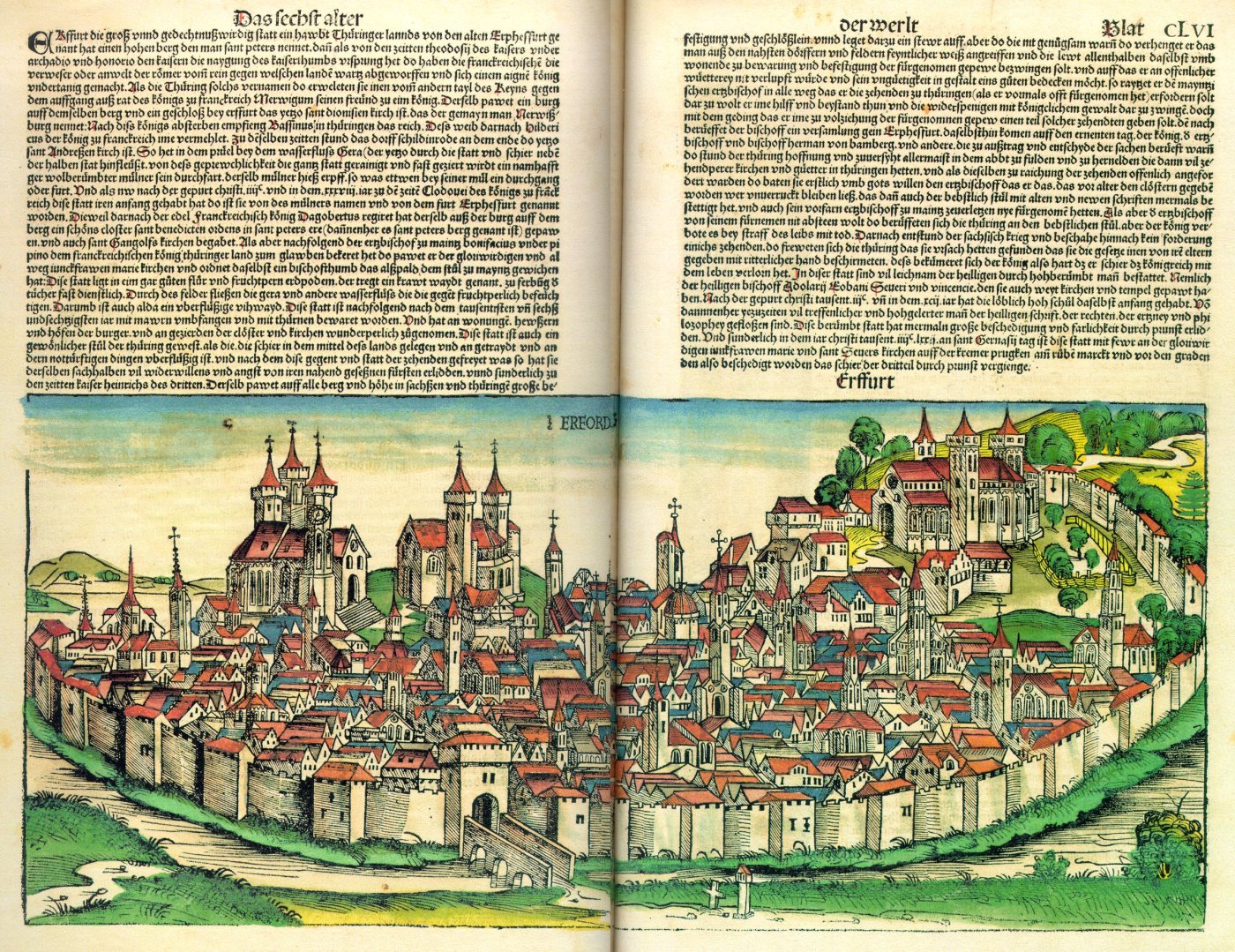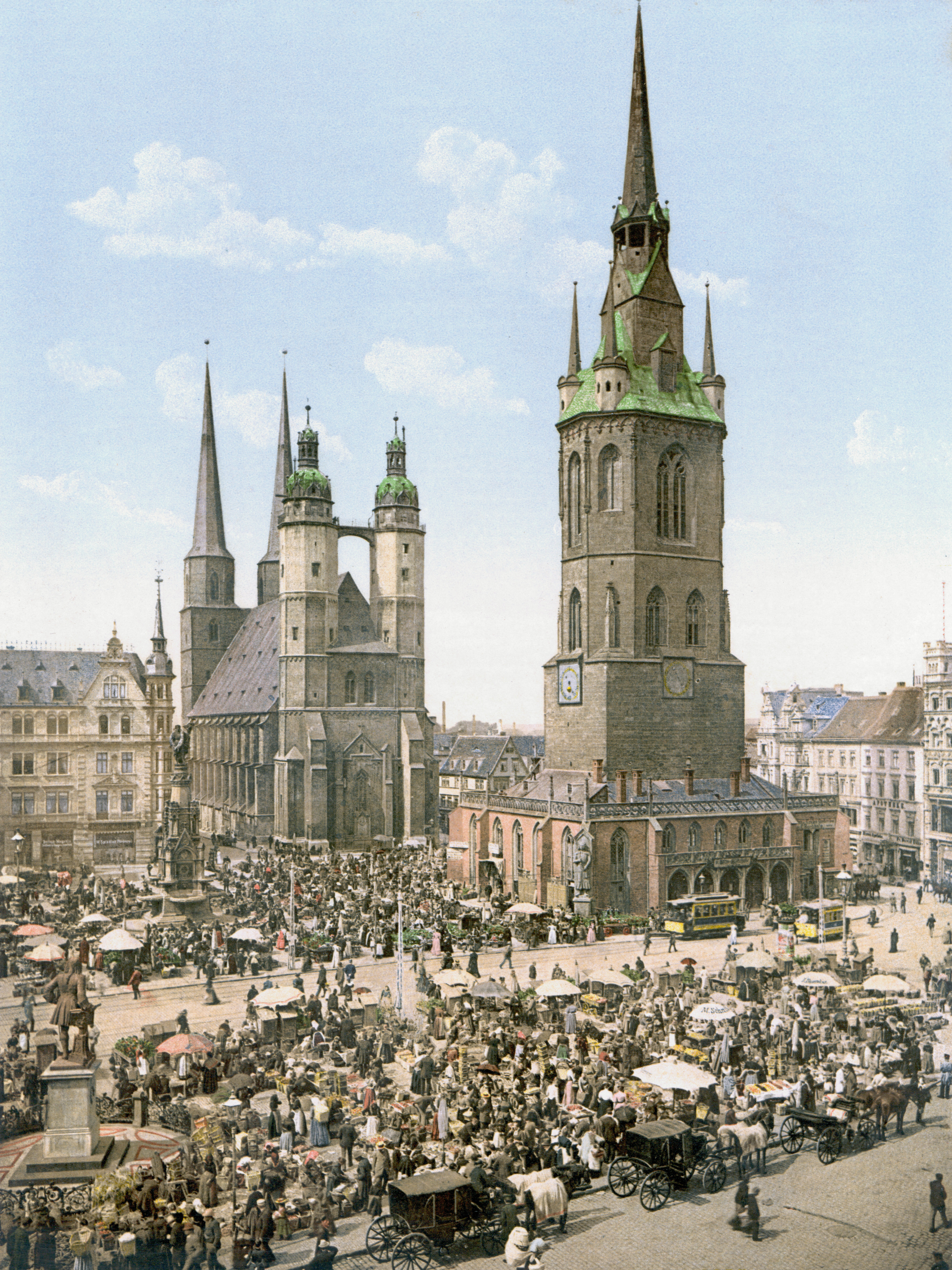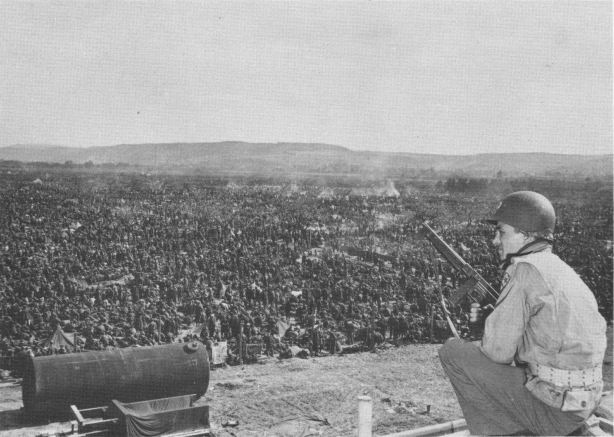|
Friedrich Ludwig Persius
Friedrich Ludwig Persius (15 February 1803 in Potsdam – 12 July 1845 in Potsdam) was a Prussian architect and a student of Karl Friedrich Schinkel. Persius assisted Schinkel with, among others, the building of the Charlottenhof Palace and the Roman Baths in Sanssouci Park in Potsdam. He was also involved with the construction of the Great Fountain, the Church of Peace, and the Orangery and observation tower on the Ruinenberg opposite Sanssouci Palace. Life Persius was born in Potsdam, where he went to public school and grammar school. From 1817 to 1819 he worked with the building inspector Gotthil Hecker; he enrolled as a carpenter. From 1819 he studied to become a surveyor at the Academy of Architecture in Berlin, and took his exam in March 1821. From 1821 he worked as a building planner in Potsdam, working under, among others, Karl Friedrich Schinkel during the building of the castle and church on the grounds of Graf Potocki at Kraków. In 1824 Persius became a mem ... [...More Info...] [...Related Items...] OR: [Wikipedia] [Google] [Baidu] |
Potsdam
Potsdam () is the capital and largest city of the Germany, German States of Germany, state of Brandenburg. It is part of the Berlin/Brandenburg Metropolitan Region. Potsdam sits on the Havel, River Havel, a tributary of the Elbe, downstream of Berlin, and lies embedded in a hilly morainic landscape dotted with many lakes, around 20 of which are located within Potsdam's city limits. It lies some southwest of Berlin's city centre. The name of the city and of many of its boroughs are of Slavic languages, Slavic origin. Potsdam was a residence of the Prussian kings and the German Emperor until 1918. Its planning embodied ideas of the Age of Enlightenment: through a careful balance of architecture and landscape, Potsdam was intended as "a picturesque, pastoral dream" which would remind its residents of their relationship with nature and reason. The city, which is over 1,000 years old, is widely known for its palaces, its lakes, and its overall historical and cultural significance. ... [...More Info...] [...Related Items...] OR: [Wikipedia] [Google] [Baidu] |
Bacharach
Bacharach (, also known as ''Bacharach am Rhein'') is a town in the Mainz-Bingen district in Rhineland-Palatinate, Germany. It belongs to the ''Verbandsgemeinde'' of Rhein-Nahe, whose seat is in Bingen am Rhein, although that town is not within its bounds. The original name ''Baccaracus'' suggests a Celtic origin. Above the town stands Stahleck Castle (''Burg Stahleck''), now a youth hostel. Geography Location The town lies in the Rhine Gorge, 48 km south of Koblenz. Constituent communities Bacharach is divided into several ''Ortsteile''. The outlying centre of Steeg lies in the Steeg Valley (''Steeger Tal'') off to the side, away from the Rhine. This glen lies between Medenscheid and Neurath to the south and Henschhausen to the north on the heights. History In the early 11th century, Bacharach had its first documentary mention. It may have been that as early as the 7th century, the kingly domain passed into Archbishop of Cologne Kunibert’s ownership; poi ... [...More Info...] [...Related Items...] OR: [Wikipedia] [Google] [Baidu] |
Erfurt
Erfurt () is the capital (political), capital and largest city of the Central Germany (cultural area), Central German state of Thuringia, with a population of around 216,000. It lies in the wide valley of the Gera (river), River Gera, in the southern part of the Thuringian Basin, north of the Thuringian Forest, and in the middle of a line of the six largest Thuringian cities ('':de:Thüringer Städtekette, Thüringer Städtekette''), stretching from Eisenach in the west, via Gotha, Erfurt, Weimar and Jena, to Gera in the east. Together with Kassel and Göttingen, it is one of the cities with more than 100,000 inhabitants lying closest to the geographic centre of Germany. Erfurt is south-west of Leipzig, north-east of Frankfurt, south-west of Berlin and north of Munich. Erfurt's old town is one of the best preserved medieval city centres in Germany. The Gera (river), Gera is spanned by the Krämerbrücke, Merchants' Bridge (''Krämerbrücke''), one of the rare bridges with ho ... [...More Info...] [...Related Items...] OR: [Wikipedia] [Google] [Baidu] |
Halle, Saxony-Anhalt
Halle (Saale), or simply Halle (), is the second largest city of the German state of Saxony-Anhalt. It is the sixth-most populous city in the area of former East Germany after (East) Berlin, Leipzig, Dresden, Chemnitz and Magdeburg as well as the 31st-largest city of Germany. With around 226,000 inhabitants, it is less populous than the state capital, Magdeburg. With Leipzig, the largest city of Saxony, Halle forms the polycentric Leipzig-Halle conurbation. Leipzig/Halle International Airport lies between the two cities, in Schkeuditz. The Leipzig-Halle conurbation is at the heart of the larger Central German Metropolitan Region. Halle has been known by many names throughout its history. From the 15th to the 17th century: ''Hall in Sachsen''. From then until the beginning of the 20th century, the name Halle an der Saale was used, and still remains a more formal reference for the city. Additionally, from 1965 to 1995 the city was referred to as ''Halle/Saale''. Halle lies i ... [...More Info...] [...Related Items...] OR: [Wikipedia] [Google] [Baidu] |
Chorin
Chorin () is a municipality in the district of Barnim in Brandenburg, Germany. It is most famous for its cloister and for being situated within the Schorfheide-Chorin Biosphere Reserve. It is famous for its medieval Brick Gothic Chorin Abbey and the Choriner Musiksommer music festival held there. History From 1815 to 1947, Chorin was part of the Prussian Province of Brandenburg, from 1947 to 1952 of the State of Brandenburg, from 1952 to 1990 of the Bezirk Frankfurt of East Germany East Germany, officially known as the German Democratic Republic (GDR), was a country in Central Europe from Foundation of East Germany, its formation on 7 October 1949 until German reunification, its reunification with West Germany (FRG) on ... and since 1990 again of Brandenburg. Demography See also * Amtssee References External links Chorin at britz-chorin-oderberg.de (German infopage) [...More Info...] [...Related Items...] OR: [Wikipedia] [Google] [Baidu] |
Kloster Lehnin
Kloster Lehnin, or just Lehnin, is a Municipalities of Germany, municipality in the Germany, German state of Brandenburg. It lies about west-south-west of Potsdam. Overview Kloster Lehnin was established on 1 April 2002 by the merger of 14 villages: The centre of the municipality is Lehnin. It is best known for Lehnin Abbey, the oldest monastery in the Margraviate of Brandenburg, established in 1180 by Otto I, Margrave of Brandenburg, Margrave Otto I. The adjacent settlement developed about 1415 out of a market town, market held by the monks outside the abbey walls. Today, this well-maintained area includes the renovated monastery church and other Gothic architecture, Gothic buildings. In addition to tourism, Kloster Lehnin's local economy is supported primarily by *the Evangelical Deaconess House Berlin Teltow Lehnin, a hospital network *Hansa-Heemann AG, a mineral water and soft drinks company *Grand River Enterprise, a cigarette company *Windeck, a metal construction comp ... [...More Info...] [...Related Items...] OR: [Wikipedia] [Google] [Baidu] |
Cologne
Cologne ( ; ; ) is the largest city of the States of Germany, German state of North Rhine-Westphalia and the List of cities in Germany by population, fourth-most populous city of Germany with nearly 1.1 million inhabitants in the city proper and over 3.1 million people in the Cologne Bonn Region, Cologne Bonn urban region. Cologne is also part of the Rhine-Ruhr metropolitan region, the List of EU metropolitan regions by GDP#2021 ranking of top four German metropolitan regions, second biggest metropolitan region by GDP in the European Union. Centered on the left bank of the Rhine, left (west) bank of the Rhine, Cologne is located on the River Rhine (Lower Rhine), about southeast of the North Rhine-Westphalia state capital Düsseldorf and northwest of Bonn, the former capital of West Germany. The city's medieval Cologne Cathedral () was the History of the world's tallest buildings#Churches and cathedrals: Tallest buildings between the 13th and 20th century, world's talles ... [...More Info...] [...Related Items...] OR: [Wikipedia] [Google] [Baidu] |
Bad Godesberg
Bad Godesberg () is a borough () of Bonn, southern North Rhine-Westphalia, Germany. From 1949 to 1999, while Bonn was the capital of the Federal Republic of Germany, most foreign embassies were in Bad Godesberg. Some buildings are still used as branch offices or consulates. Geography Bad Godesberg is located along the hills and cliffs of the west bank of the Rhine river, in west central Germany. Godesberg is also the name of the steep hill, of volcanic origin, on the top of which are the ruins of the Godesburg, a castle destroyed in 1583 during the Cologne War. History The following events occurred, per year: * 722 - First official record of the town, which was named after a nearby mountain, the Woudenesberg (later Godesberg), a basalt cone where the Ubii, a Germanic tribe, worshipped the god Wotan. * 1210 - On 15 October, Archbishop of Cologne Dietrich I lays the foundation stone of the Godesburg fortress on the Godesberg mountain. * 1583 - On 17 December, the Godesb ... [...More Info...] [...Related Items...] OR: [Wikipedia] [Google] [Baidu] |
Remagen
Remagen () is a town in Germany in the state of Rhineland-Palatinate, in the district of Ahrweiler (district), Ahrweiler. It is about a one-hour drive from Cologne, just south of Bonn, the former West Germany, West German seat of government. It is situated on the left (western) bank of the river Rhine. There is a ferry across the Rhine from Remagen every 10–15 minutes in the summer. Remagen has many notable and well-maintained buildings, churches, castles and monuments. It also has a sizeable pedestrian zone with plenty of shops. Overlooking the west bank of the Rhine just north of the city centre is the Apollinariskirche. It has an observation deck that is only open to parishioners on Sundays. Pedestrians reach the church via a dirt trail that passes a series of roadside monuments representing each of the fourteen Stations of the Cross. The church grounds contain an outdoor crypt and an abbey. Further down the river is one of the many castles along the Rhine, perched even highe ... [...More Info...] [...Related Items...] OR: [Wikipedia] [Google] [Baidu] |
Andernach
Andernach () is a town in the district of Mayen-Koblenz, in Rhineland-Palatinate, Germany, of about 30,000 inhabitants. It is situated towards the end of the ''Neuwied basin'' on the left bank of the Rhine between the former tiny fishing village of Fornich in the north and the mouth of the small river Nette in the southeast, just north of Koblenz, with its five external town districts: Kell, Miesenheim, Eich, Namedy, and Bad Tönisstein. A few hundred metres downstream of Andernach the Rhine valley narrows from both sides forming the northern part of the romantic ''Middle Rhine'' stretch. Already in Roman times the place the narrow passage begins was named "Porta Antunnacensis" or ''Andernachian Gate''. It is formed by two hills, the ''Krahnenberg'' (engl. ''Crane hill'') and the ''Engwetter'' (''Narrow weather'') on the right bank near the wine village ''Leutesdorf'' (external town district of Bad Hönningen). The crane hill is named after the old crane beneath ... [...More Info...] [...Related Items...] OR: [Wikipedia] [Google] [Baidu] |
Strasbourg
Strasbourg ( , ; ; ) is the Prefectures in France, prefecture and largest city of the Grand Est Regions of France, region of Geography of France, eastern France, in the historic region of Alsace. It is the prefecture of the Bas-Rhin Departments of France, department and the Seat of the European Parliament in Strasbourg, official seat of the European Parliament. The city has about three hundred thousand inhabitants, and together Eurométropole de Strasbourg, Greater Strasbourg and the arrondissement of Strasbourg have over five hundred thousand. Strasbourg's functional area (France), metropolitan area had a population of 860,744 in 2020, making it the eighth-largest metro area in France and home to 14% of the Grand Est region's inhabitants. The transnational Eurodistrict Strasbourg-Ortenau Eurodistrict, Strasbourg-Ortenau had a population of roughly 1,000,000 in 2022. Strasbourg is one of the ''de facto'' four main capitals of the European Union (alongside Brussels, Luxembourg ... [...More Info...] [...Related Items...] OR: [Wikipedia] [Google] [Baidu] |
Munich
Munich is the capital and most populous city of Bavaria, Germany. As of 30 November 2024, its population was 1,604,384, making it the third-largest city in Germany after Berlin and Hamburg. Munich is the largest city in Germany that is not a state of its own. It ranks as the 11th-largest city in the European Union. The metropolitan area has around 3 million inhabitants, and the broader Munich Metropolitan Region is home to about 6.2 million people. It is the List of EU metropolitan regions by GDP#2021 ranking of top four German metropolitan regions, third largest metropolitan region by GDP in the European Union. Munich is located on the river Isar north of the Alps. It is the seat of the Upper Bavaria, Upper Bavarian administrative region. With 4,500 people per km2, Munich is Germany's most densely populated municipality. It is also the second-largest city in the Bavarian language, Bavarian dialect area after Vienna. The first record of Munich dates to 1158. The city ha ... [...More Info...] [...Related Items...] OR: [Wikipedia] [Google] [Baidu] |








